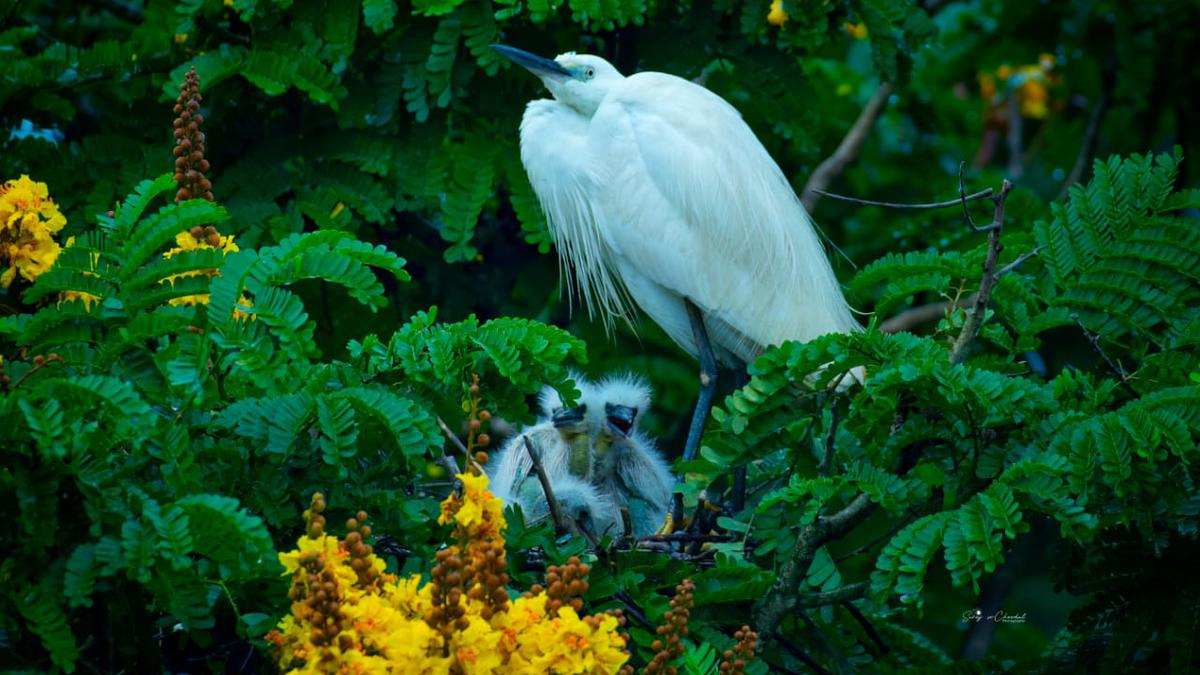Description

Disclaimer: Copyright infringement not intended.
Context
- The yearly heronry count, a collaborative effort between WWF-India and the Forest Department in Thiruvananthapuram district, has documented a higher number of heronries compared to previous counts.
Details
- Method is widely recognized as a precise and reliable approach to assess the reproductive populace of waterbirds within a specific region.
- The count entails the documentation of "seemingly inhabited nests" of both herons and egrets, facilitating a precise evaluation of the reproductive waterbird community.
- The predominant tree species hosting the heronries included teak, mango, copperpod tree, tamarind, rain tree, peepal, banyan tree.
- The heronry situated in Vizhinjam contained the most extensive count of nests (173).
- Additional significant nesting sites within the district encompass Rajaji Nagar, near the Housing Board junction, Kumarichantha near Poonthura, and Kazhakuttom.
- Six distinct locations, viz., Kumarapuram, Kannettumukku, Vellayani junction, Maruthoor, Panavila junction, and Kanyakulangara, had no heronry, which could indicate desertion or a different nesting season.
- In 2021, the heronry count was carried out amidst the limitations imposed by the COVID-19 pandemic, revealing a total of 233 nests attributed to five distinct waterbird species.
Herons
- The herons are long-legged, long-necked, freshwater and coastal birds
- Although herons resemble birds in some other families, such as the storks, ibises, spoonbills, and cranes, they differ from these in flying with their necks retracted, not outstretched.
- They exhibit very little sexual dimorphism in size.
- The neck can retract and extend and is retracted during flight, unlike most other long-necked birds.
- The neck is longer in the day herons than the night herons and bitterns.
- The herons are carnivorous.
- The members of this family are mostly associated with wetlands and water and feed on a variety of live aquatic prey.
- Their diet includes a wide variety of aquatic animals, including fish, reptiles, amphibians, crustaceans, molluscs, and aquatic insects.
- Purple Heron was also found at the Punchakkari paddy fields in Vellayani.
Benefits
- Renjan Mathew Varghese, the State Director of WWF-India, highlighted that the yearly initiative conducted under the People4Planet program of WWF-India produces diverse advantages.
- He emphasized that the program serves as an avenue to acquaint numerous individuals with the realm of avian creatures, birdwatching, and nature observation.
- It offers an opportunity for birdwatchers to enhance their birding skills and make substantial contributions to the preservation of avian species over the long term.
- Varghese noted that heronries are commonly located at top sizable trees, and this endeavor aids in monitoring the robustness of the city's tree canopy as well.
WWF (World Wide Fund for Nature)
- WWF India is the Indian chapter of the global conservation organization WWF (World Wide Fund for Nature).
- It focuses on environmental conservation, biodiversity protection, sustainable development, and raising awareness about ecological issues in India.
- WWF India undertakes various projects and initiatives to address conservation challenges, promote sustainable practices, and engage communities and stakeholders in preserving the country's rich natural heritage.

Conclusion
Due to their position as prominent predators in the aquatic food web, monitoring their numbers can serve as an indicator of the well-being of both freshwater and brackish water aquatic ecosystems.
|
PRACTICE QUESTION
Q. With reference to India’s Biodiversity “Heronries and Redstart,” is related to which of the following:
(a)Birds
(b)Primates
(c)Reptiles
(d)Amphibians
Answer a.(Birds)
|
https://www.thehindu.com/news/national/kerala/heronries-are-thriving-in-thiruvananthapuram-district-says-a-wwf-survey/article67206306.ece












